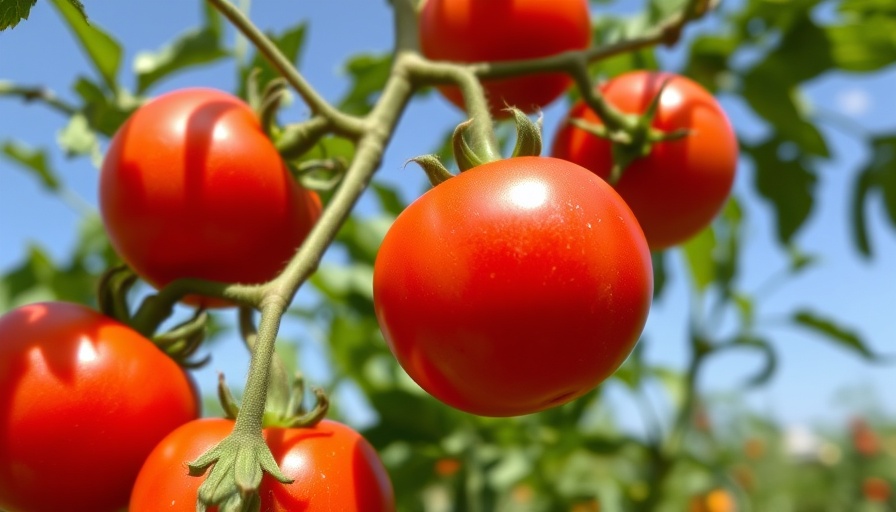
The Mystery of Flowering Without Fruit
As gardening enthusiasts, we often get excited to see our tomato plants bursting with flowers, only to feel a wave of disappointment when those blooms fail to become juicy, red fruits. Understanding the conditions necessary for tomatoes to flourish is crucial for successful gardening. This article dives deep into common reasons why tomato plants may flower profusely yet produce little to no fruit, ultimately providing a guide to achieving a productive garden.
Essential Conditions for Fruit Production
Tomatoes, scientifically known as Solanum lycopersicum, are annual plants that thrive in a range of environmental conditions, specifically in areas categorized from Zones 2 to 11. They require plenty of sunlight, well-draining soil rich in organic matter, and a proper balance of moisture and nutrients. Here, we'll explore some common pitfalls that could lead to your tomato plants failing to bear fruit despite their vibrant floral display.
1. Lack of Sunlight
For tomatoes to produce fruits, they need a sunny spot. Ideally, they should receive at least six hours of direct sunlight per day. Insufficient light leads to weak plants that struggle to flower and form fruit. If your plants are in the shade or surrounded by overly leafy companions, consider relocating them to sunnier spots for healthier growth.
2. Moisture Management is Key
Water plays an integral role in nutrient uptake, and both overwatering and underwatering can impede fruit production. Aim to provide one to two inches of water weekly, adjusting based on weather conditions. Too much water can lead to oversaturation and root rot, while too little can dry out the roots. Using techniques like soaker hoses not only conserves moisture but also combats weeds, creating an ideal environment for your tomatoes to flourish.
3. Nutrient Balance Matters
Tomatoes require specific nutrients to thrive, particularly phosphorus and potassium. Too much nitrogen can lead to lush foliage but stunted fruit development, while deficiencies can result in yellowing leaves and poor flowering. Conducting a soil test can reveal nutrient imbalances and guide you in fortifying your soil with the necessary amendments, allowing your tomatoes to flourish.
4. Combatting Pests and Diseases
Insects and plant diseases can be detrimental to your plants' health. Pests like aphids, spider mites, and whiteflies often appear when plants are stressed due to insufficient nutrition or moisture. Regularly inspecting your plants and implementing pest control methods will not only enhance plant health but also increase flower-to-fruit conversion rates.
5. Ensuring Effective Pollination
Tomatoes are generally self-pollinating, but their flowers need a bit of help from the wind or pollinators to ensure proper fertilization. You can increase pollination success by gently shaking your plants to encourage pollen transfer. Additionally, creating a pollinator-friendly garden habitat can attract bees and other beneficial insects.
6. Pruning for Better Airflow
Sometimes, the key to prolific fruit production is simply letting the light in and encouraging airflow. Regular pruning of excessive foliage allows sunlight to penetrate and improves drying conditions—helping prevent the development of diseases that could hinder flowering and fruiting.
7. Weather Extremes Impact Growth
Tomatoes grow best in moderate temperatures. Extreme heat or cold can disrupt flower formation and ultimately affect fruit set. Monitoring local weather patterns and using protective measures such as row cover can safeguard your tomato plants against unforeseen temperature fluctuations.
Taking Action: How to Optimize Your Tomato Crop
By being proactive and addressing these common issues, you can cultivate a thriving tomato garden. Consistent monitoring and adjusting your care practices based on your specific environmental conditions can lead to a bountiful harvest.
Conclusion: Embrace the Process
Growing tomatoes can be both rewarding and challenging. With the right knowledge and tools, you can overcome the hurdles of flowering without fruit. Keep learning, and don’t hesitate to reach out to fellow gardeners or local gardening extensions for support. For those eager to dig deeper into their gardening practices, implementing these actionable insights can bring renewed vigor to your garden.
 Add Row
Add Row  Add
Add 




Write A Comment